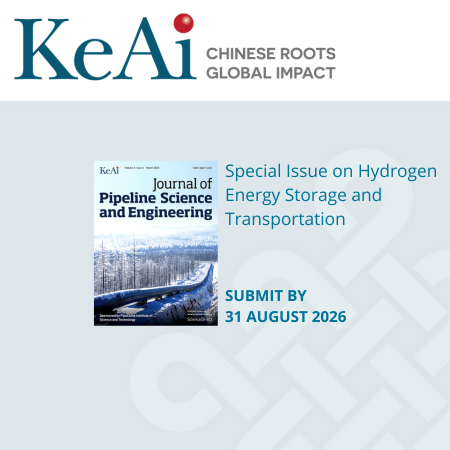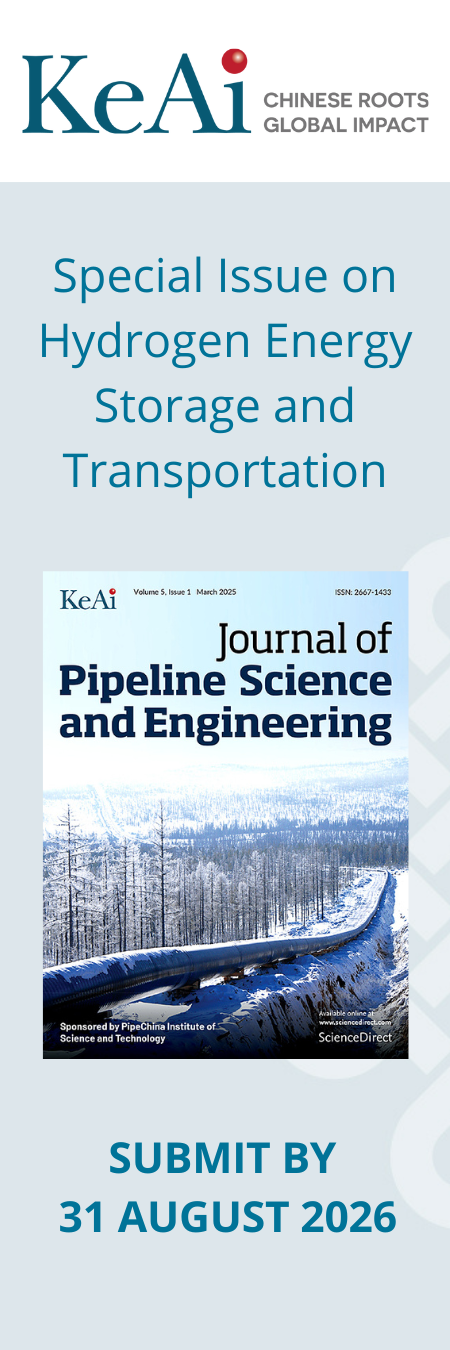Review and analysis of pipeline leak detection methods
December 2022
A pipeline burst or rupture causing a leak may significantly impact the environment and the reputation of the company operating the pipeline. In recent years, oil and gas pipelines are expected to be...
A comprehensive review of polyethylene pipes: Failure mechanisms, performance models, inspection methods, and repair solutions
June 2024
•Polyethylene (PE) pipes account for up to 90–95 % of new gas distribution pipelines in Europe and the United States.•The failure of a PE pipe is a multivariate problem that can occur due to pre-existing...
A Review: Research and Application of Pipeline Robots in the Oil and Gas Industry
Available online 28 August 2025
This study reviews the research and application advancements of pipeline robots in oil and gas pipelines. Oil and gas pipelines, as critical infrastructure for global energy transportation, have historically...
A Comprehensive Survey on Pipeline Monitoring Technologies: Advancements, Challenges, Market Opportunities and Future Directions
Available online 27 August 2025
Pipelines are essential infrastructure used to transport resources such as oil, gas, water, and sewage. Efforts should be driven toward ensuring the safe operation of these pipelines, as this directly...
Advancements and future outlook of safety monitoring, inspection and assessment technologies for oil and gas pipeline networks
December 2025
The expansion of high-grade steel, large-diameter, and high-pressure pipelines, along with the integration of new energy and unconventional media into oil and gas pipeline networks, poses significant...
CRA clad pipes: Do their benefits justify sole selection?
September 2025
This article presents a case study of a gas leak at a girth weld on a subsea spool. The leak occurred 14 days after the pipeline’s start-up. The pipeline in question was a 36-inch corrosion-resistant...
Risk-based pipeline integrity management: A road map for the resilient pipelines
March 2021
Pipelines are the most vital energy-transportation mediums of today’s energy-intensive economies. To a level, pipeline integrity is tied to the continuous development and robustness of modern societies,...
Standards and codes for hydrogen in pipeline infrastructure: testing, qualification, and integrity assessment
December 2025
•Framework with Gaps: Current standards provide foundational guidance for qualifying materials and infrastructure in hydrogen service but are insufficient for addressing the unique challenges of hydrogen...
A Comparative Study on the Effect of GMAW Welding Current on the Performance of API 5L GrB Pipeline Steel Welds for Oil and Gas Industrial Applications
Available online 3 September 2025
The reliability of oil and gas transportation depends heavily on weld quality during pipeline construction. This study investigates the effect of gas metal arc welding (GMAW) current on API 5L GrB pipeline...
Energy pipeline degradation condition assessment using predictive analytics – challenges, issues, and future directions
September 2024
It is of paramount importance to ensure the safe operation of energy pipelines for pipeline owners and operators. Therefore, effective condition assessment of pipelines is imperative. For this purpose,...
Natural gas demand prediction: comprehensive overview of the current situation and future development direction
Available online 2 July 2025
Natural gas demand (NGD) forecasting can accurately estimate the gas demand, and help to plan the gas source configuration, pipeline network transportation and gas storage arrangements in advance, so...
Critical flow velocity phenomenon in erosion-corrosion of pipelines: determination methods, mechanisms and applications
March 2021
The critical flow velocity phenomenon is common in erosion-corrosion of many materials. It is of great importance to develop methods to determine the critical flow velocity and understand mechanisms...
A review of computer vision applications for asset inspection in the oil and gas industry
September 2025
This review explores the current application of computer vision (CV) technologies in the inspection of pipelines within the oil and gas industry, highlighting the methodologies, challenges, and advancements...
A critical and bibliometric review of life cycle cost analysis integration into decision support systems for pipeline asset integrity management
Available online 6 June 2025
•Maintaining pipeline integrity is essential for safety, environmental protection, and energy security.•Traditional pipeline management is reactive, leading to high costs, safety risks, and inefficiencies.•Life...
Pipeline Transportation Strategy and Key Technological Breakthroughs for High-Quality Development of Hydrogen Energy Industry under the Dual Carbon Goals
Available online 25 October 2025
China’s hydrogen scale-up hinges on resolving midstream bottlenecks that move volumes from resource-rich northern and western basins to demand-dense coastal corridors. A structured synthesis of policy,...
Drag reduction in single-phase crude oil flow: A mini-review
December 2022
It is well recognized that a major issue for fluid flows in many industrial pipe systems, including the transportation of crude oil, is the high energy consumption in the pipeline system brought on...
A techno-economic study of the strategy for hydrogen transport by pipelines in Canada
September 2023
•Analyzed the various hydrogen transportation methods.•Suggested the optimal option for hydrogen transport in Canada.•Discussed the technical challenges when repurposing existing pipeline for hydrogen...
Review of minimum requirements and development of guidance for weld spacing
September 2022
Follow-on work to a recently completed joint industry project pertaining to hot tap branch connections included the development of guidance on minimum spacing between various combinations of adjacent...
Oil pipeline leakage monitoring developments in China
December 2023
Pipeline is the most economical and efficient way of oil transportation, pipeline integrity management is an effective means to prevent pipeline accidents and ensure the safe operation of pipelines...
Research Status and Technical Analysis of CO2 Conversion of In-service Oil and Gas Pipelines
Available online 25 August 2025
As a key link in CCUS technology, pipeline transportation is of great significance for realizing China 's " double carbon " goal. In view of the high cost of separate construction of carbon dioxide...
Investigation of cavitation damage patterns in centrifugal pump blades under rotating flow fields
Available online 13 April 2025
To investigate the damage caused by the collapse of cavitation bubbles on the centrifugal pumps impeller wall and to explore the relationship between these bubbles and cavitation pits in a rotating...
Research progress on dynamic crack propagation and crack arrest models of supercritical and dense-phase CO2 pipelines
September 2025
In the past decade, research on the propagation and arrest of CO2 pipeline fractures has achieved some results. This paper comprehensively reviews and evaluates the full-scale burst test, arrest control...
Study of the nickel concentration effect on toughness and hydrogen embrittlement resistance of pipeline steel
June 2024
•The tensile toughness, impact toughness, and hydrogen embrittlement resistance of pipeline steel increase when Ni concentration is below 1 %, followed by a decrease when Ni is higher than 1 %.•When...
Experimental study of the full-scale burst failure behavior of carbon dioxide steel pipeline
March 2025
Carbon Capture, Utilization and Storage (CCUS) is an important strategic reserve technology to reduce CO2 emissions. Accelerating the application and development of CCUS technology is a realistic need...
Enhancing pipeline system resilience: a reliability-centric approach
September 2025
Pipelines are the most widely used system for transporting liquid and gaseous energy materials, but throughout their lifespan, they are exposed to various detrimental factors, such as corrosion and...


